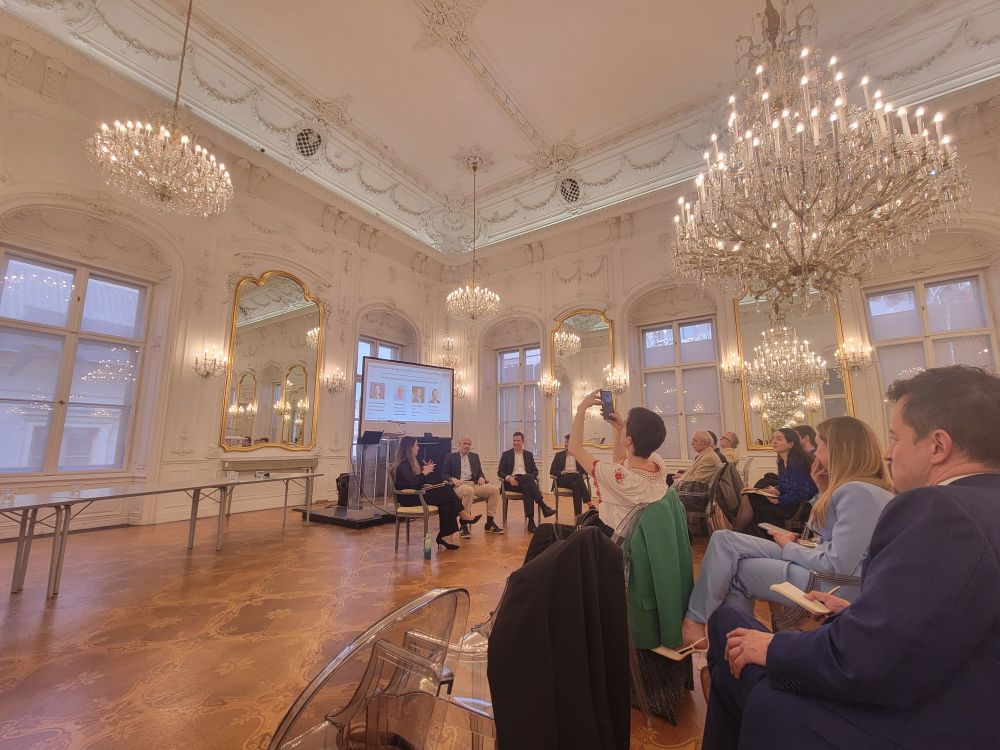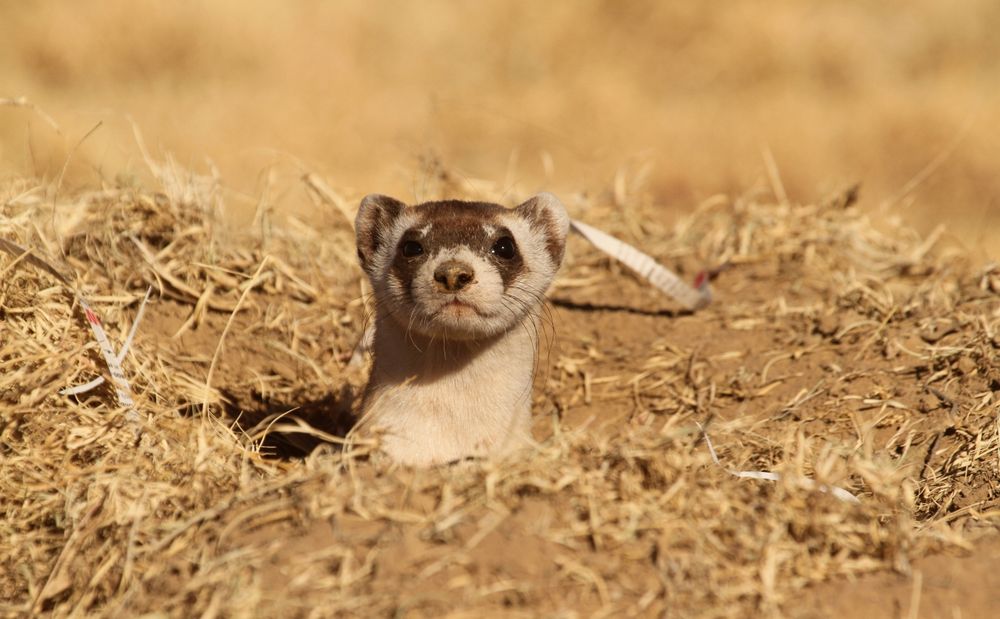Congratulations, Dr. An-Chi Cheng for her important contribution to understanding deer health! 🧪🌏👩🏻🔬BVDV is a pathogen mainly of cattle that causes abortions in white-tailed deer. Dr. Cheng is a critical member of our pathogen diagnostics team. Go An-Chi!
12.08.2025 10:52 — 👍 9 🔁 1 💬 0 📌 0
Here is another faculty position that looks cool
10.08.2025 11:03 — 👍 0 🔁 0 💬 0 📌 0
Here is an interesting permanent lectureship opportunity
10.08.2025 10:58 — 👍 0 🔁 0 💬 0 📌 0

Exogenous xenosurveillance allows us to sample peripheral blood of wildlife hosts using mosquitoes. We can then identify hosts using barcodes and screen for host pathogens.
Just published today! Our group used mosquitoes as flying syringes to conduct surveillance on pathogens of turkeys, white-tailed deer and invasive wild pigs. Not only could we detect DNA and RNA viruses, we could estimate prevalence! 🌎🧪👩🔬
doi.org/10.3390/path...
08.08.2025 16:13 — 👍 69 🔁 19 💬 5 📌 1

Messy
Lola Young · This Wasn't Meant For You Anyway · Song · 2024
I've always had a soft spot for songs that celebrate women being messy and complicated and not always nice. Here's my latest fav!
open.spotify.com/track/35ISBk...
31.05.2025 16:06 — 👍 1 🔁 0 💬 0 📌 0

I'm attending a conference in Budapest on global energy challenges sponsored by Hungarian Fulbright associations. The topic was interesting but the star was the Roccoco crown molding and chandeliers!
30.05.2025 16:04 — 👍 1 🔁 0 💬 0 📌 0
The climate economy: Emerging strategies for Australia
Join a PhD project on Australia's climate economy, exploring how transport, policy, and finance adapt to climate change.
The Macquarie PhD scholarship on our new Climate Economy project is now open - working with me, @garethbryant.bsky.social Sophie Weber, @clairerhiannon.bsky.social & Svenja Keele. We'll explore how climate change remakes our political economy. Topic negotiable.
www.mq.edu.au/research/phd...
29.05.2025 03:33 — 👍 11 🔁 12 💬 0 📌 1
Darwin-Hamied Senior Research Fellowship (stipendiary) in Biodiversity | Christs College Cambridge
Wonderful new 5-year postdoctoral fellowship opportunity at the University of Cambridge on #Biodiversity:
www.christs.cam.ac.uk/darwin-hamie...
29.05.2025 04:49 — 👍 25 🔁 25 💬 0 📌 0

Greetings from my office at the University of Novi Sad, Serbia, where I am currently on a Fulbright Fellowhip studying red deer health 🧪🌏👩🏻🔬🦌🦌🦌
26.05.2025 12:09 — 👍 26 🔁 1 💬 0 📌 0

This figure highlights the diversity of avoidance across different species in response to pathogens and parasites. (A) Rainbow trout avoid waters with high concentrations of trematode cercariae, reducing exposure to these parasites. (B) Healthy Caribbean spiny lobsters avoid sharing dens with those infected by viruses, preventing the spread of infection within their communities. (C,D) Avoidance underlies many human public health measures such as social distancing, to minimize the risk of infectious disease contagion. (E) Oystercatchers avoid eating the largest cockles, which are likely to be infested with parasitic helminths. (F,G) Bees and ants (eusocial insects) exhibit complex social behaviours to minimize infection risks. Bees isolate or remove infected individuals from the colony, while ants restructure their social networks to reduce contact with fungal-infected foragers. (H) Sheep avoid food and water sources contaminated with feces, reducing the risk of ingesting parasites that may be present in such environments. (I,J) Caenorhabditis elegans and Drosophila melanogaster. These model organisms illustrate how detected pathogenic cues can modify behaviour and provide insights into the neurological integration of sensory perception and behavioural response to pathogens. Plants, like Saline latifolia (K), can avoid infection too, for example by flowering for shorter periods to reduce contact with fungal spores transmitted by pollinators. Root compounds of some sorghum (L) lines are associated with reduced germination of parasitic Striga seeds, demonstrating chemical avoidance strategies. (M) Crickets avoid detection by parasitic flies through the selection of variants that cannot sing, disrupting the ability of parasites to locate hosts acoustically. (N) Spongy moths show variability in larval behaviour to avoid virus-contaminated foliage. (O) Lemurs avoid water sources that have an elevated risk of fecal contamination.
This primer on infection avoidance was incredibly fun to write with @cr-amo.bsky.social and Mandy Gibson. We cover its taxonomic breadth, mechanisms and evolution, and its importance across fields as diverse as public health, conservation, and agriculture. 🧪
www.cell.com/current-biol...
#SymbioSky
20.05.2025 09:18 — 👍 11 🔁 8 💬 2 📌 0
Post a photo you took with no context to bring some Zen to the timeline.
11.03.2025 00:33 — 👍 1 🔁 0 💬 0 📌 0
bsky.app/profile/epi....
I just had our comms people post directly to blue sky!
08.03.2025 18:58 — 👍 2 🔁 0 💬 0 📌 0

www.instagram.com/reel/DG8NZk1...
Happy International Women's Day!
Here's to women in science!🧪🌎👩🏻🔬
08.03.2025 16:50 — 👍 61 🔁 7 💬 0 📌 1

Pussy Riot
Pussy Riot is a feminist conceptual art group
Pussy Riot g.co/kgs/UXRscPR
pussyriot.love
Perhaps my favorite grrl band of all time. They are feminist heroes who truly live by their words. A Russian collective of punk musicians, members have been imprisoned, beat, and exiled. They continue, undeterred. Rock on, sisters!💀💓💪
11.02.2025 10:18 — 👍 0 🔁 0 💬 0 📌 0
An alternative to ggplot? Hurray!👯♀️
06.02.2025 10:19 — 👍 3 🔁 0 💬 0 📌 0

22 members of the UF Cervidae Health Research Initiative pose for a group photo
wec.ifas.ufl.edu/cheri/
The UF Cervidae Health Research Initiative held its annual symposium yesterday. We are ecologists, veterinarians, geographers, virologists, and entomologists who use a One Health approach to study deer! 🌎🧪👩🏻🔬
31.01.2025 12:09 — 👍 17 🔁 4 💬 0 📌 0

UF Research sent this memo today. It came from the White House Office of Management and Budget and was sent to all federal agency executives yesterday. 🧪🌎👩🔬
28.01.2025 21:22 — 👍 14 🔁 5 💬 3 📌 0

Barracuda
Heart · Little Queen · Song · 1977
open.spotify.com/track/4KfSds...
Grrl rock Tues: Sisters Ann & Nancy Wilson of Heart deliver heavy metal vocals, galloping riffs and in your face lyrics. Barracuda is a #metoo anthem aimed at all the producers and promoters who treated them as less than because they were women rockers. Go get em!
28.01.2025 10:33 — 👍 3 🔁 0 💬 0 📌 0
Prof Samantha Wisely from University of Florida here. I am a wildlife disease ecologist and would love to be added to this starter pack
24.01.2025 12:03 — 👍 0 🔁 0 💬 1 📌 0
Okay I started a wildlife health starter pack! Please share and let me know if you want to be added!
go.bsky.app/MFMtaMw
22.11.2024 22:30 — 👍 38 🔁 16 💬 16 📌 1
Hi! Dr. Sam Wisely here. I'm a prof at UF studying wildlife disease. Would you please add me to your starter pack? Thanks for creating it!
23.01.2025 11:27 — 👍 1 🔁 0 💬 0 📌 0
Writer, scientist, "establishment statistician" (holding the fort on truth and math). Professor at Stanford University. Co-host of the Normal Curves podcast.
Research & solutions for diseases in Florida white-tailed deer from the University of Florida IFAS Cervidae Health Research Initiative.
Website: https://wec.ifas.ufl.edu/cheri/
Bioinformatician working in microbial genomics, hiking fan and reading fanatic | she/her | opinions are my own & may not reflect the views of my employer or funding agency
Fungi >>>
annehatmaker.com
Associate Professor of Geography at Miami University, Ohio, USA. Remote sensing, fire, landscape ecology, physical geography, natural hazards. Header photo: sunset in Naivasha, Kenya, July 2023 🇰🇪
Professor passionate about student success & team science #firstgen #Brassica enthusiast walking Dogs of the Plant World
#Agriculture #Food #HigherEd #EduSky #Agsky #SciComm & more
#Soil #Crop #Science ; opinions mine
Award-winning science communicator, bestselling author, TV personality & co-founder of Scientists for XR - making STEM fun, fighting misinformation & advocating for diversity.
AuDHD, she/her
2x TEDx speaker, 4x cat lover
www.emilygrossman.co.uk
Asst Prof, Florida Medical Entomology Laboratory | @UFlorida |
disease ecology | global change dynamics (LULC, #climate) | poodle lover | (she/her) tweets my own
Entomology + Genetics & Genomics PhD student
One Health, geography, disease ecology
Animal disease research biologist, medical geography and medical entomology. Still making sick maps.
Dad, Husband, Mammalogist, Conservation Biologist trying to make the world a better place in the #ageofmammals
Associate Professor @ UCalgary 🇨🇦 | wildlife 🐴🦌🐏 | molecular ecology | evolutionary ecology | conservation genetics. Mostly long-term individual-based studies. 🏃🏻⛷️ He/him https://sites.google.com/site/jocelynpoissant. Opinions are my own.
• Working hands on with NR mink since 2018 (state permitted)
• Studying all mustelids
• Watching HPAI in mammals
• A safe spot for all 🏳️🌈🏳️⚧️✊🦊
• Opposed to fascism anywhere
Build community, protect each other.
Infectious Disease Ecology & Applications (IDEA) Lab @ WSU
Word nerd 📖 | Bird nerd 🪶
Erstwhile hockey player | Dog parent
Wildlife ecologist 🐘🐒 + community based conservation 🫂. Lived and worked in Southern + East Africa, SE Asia. New here!
Researcher @ird_fr
STEMinist | Infectious diseases ecology, molecular epidemiology, NTDs | #leptospirosis #melioidosis #zoonoses #OneHealth #AMR
Researcher at INRAE 🧑🔬, Paris, France🇫🇷, Soil ecosystem 🌾, #Microplastic pollution, Earthworms 🪱, C cycle, Composting, #PlasticsTreaty
https://tinyurl.com/mea87kk5
Wildlife research and conservation for the state of FL🏝️. always birding🦩. climber 🪨. fluffy dog petter🐕.
















